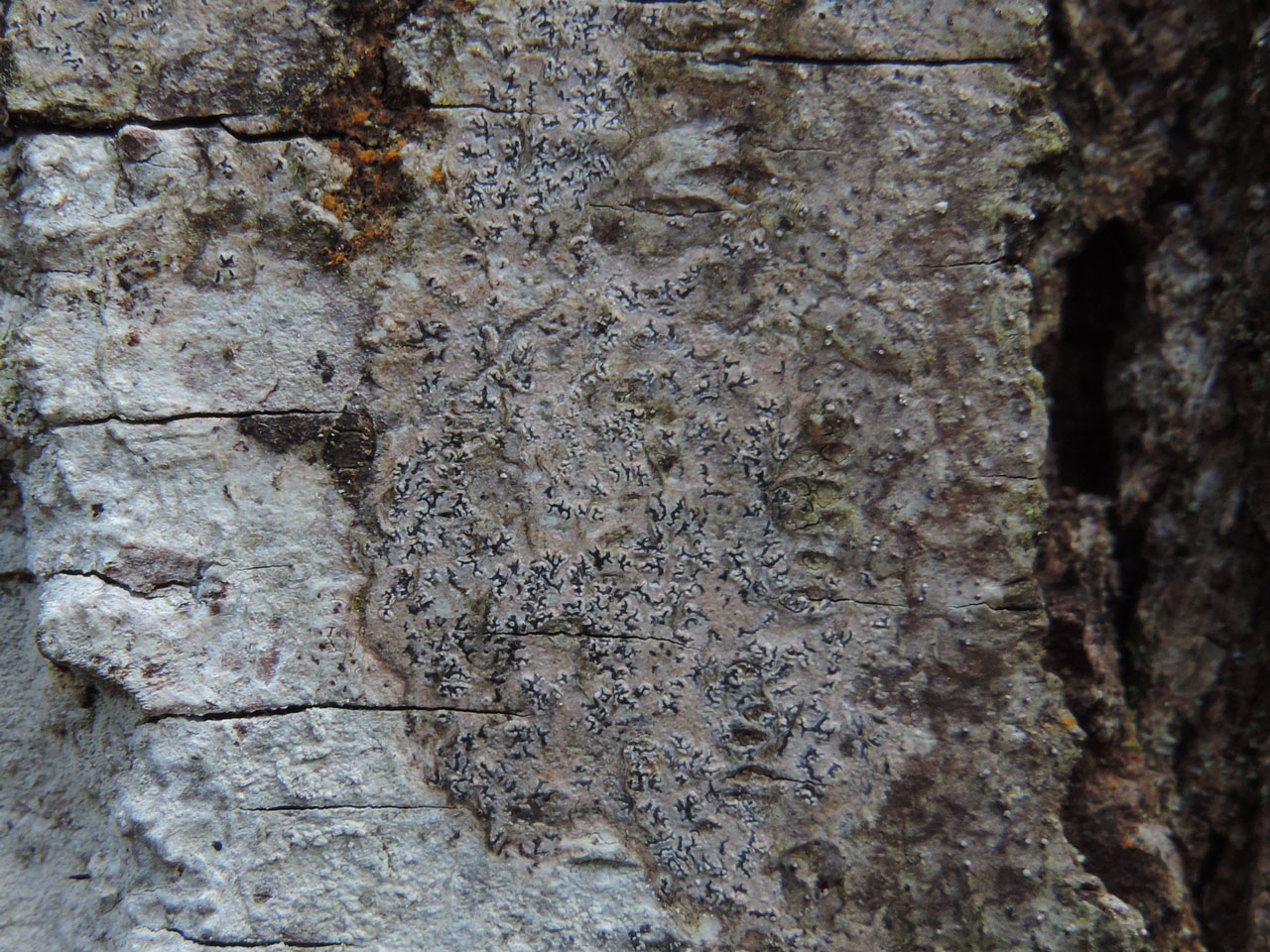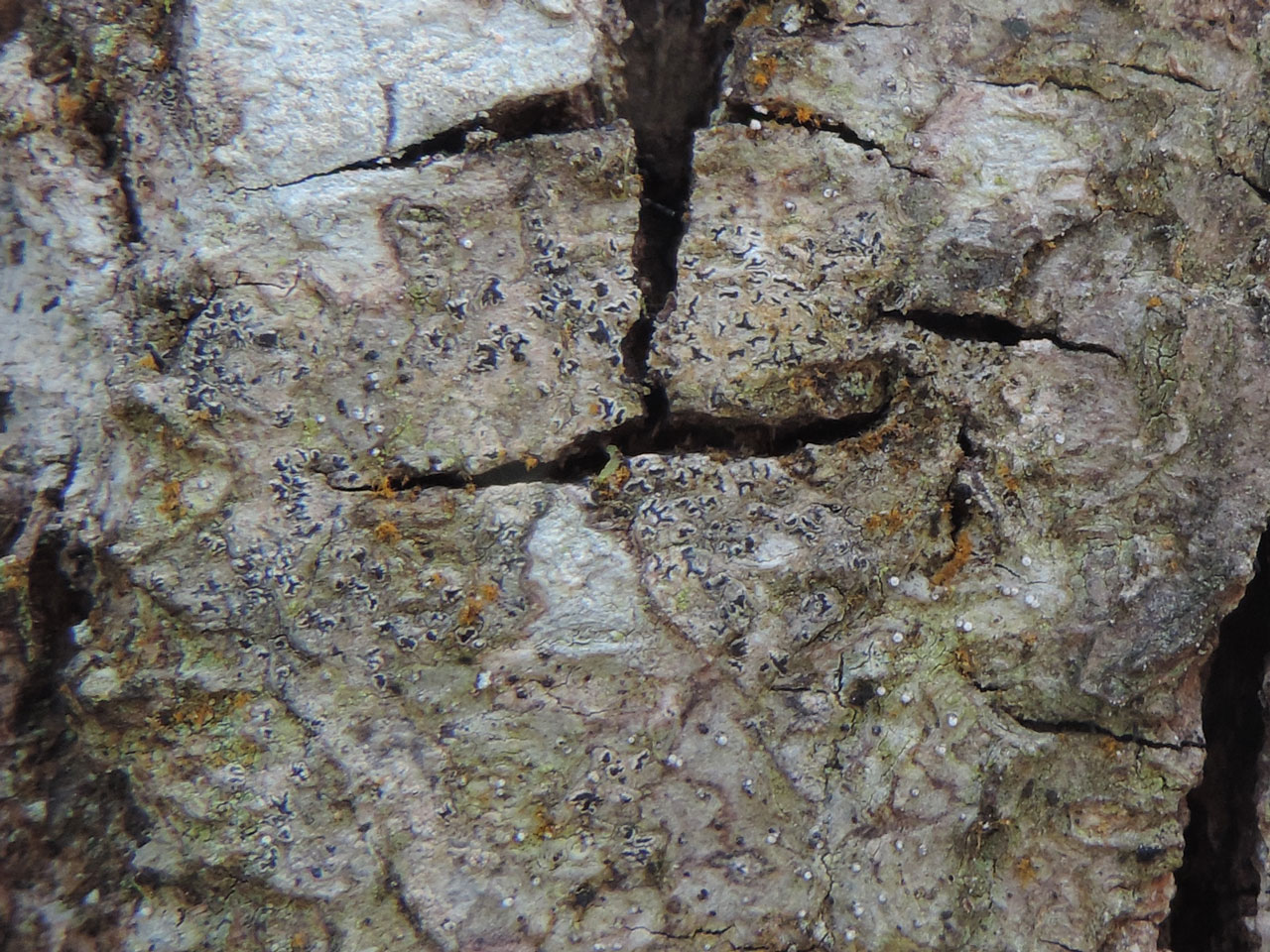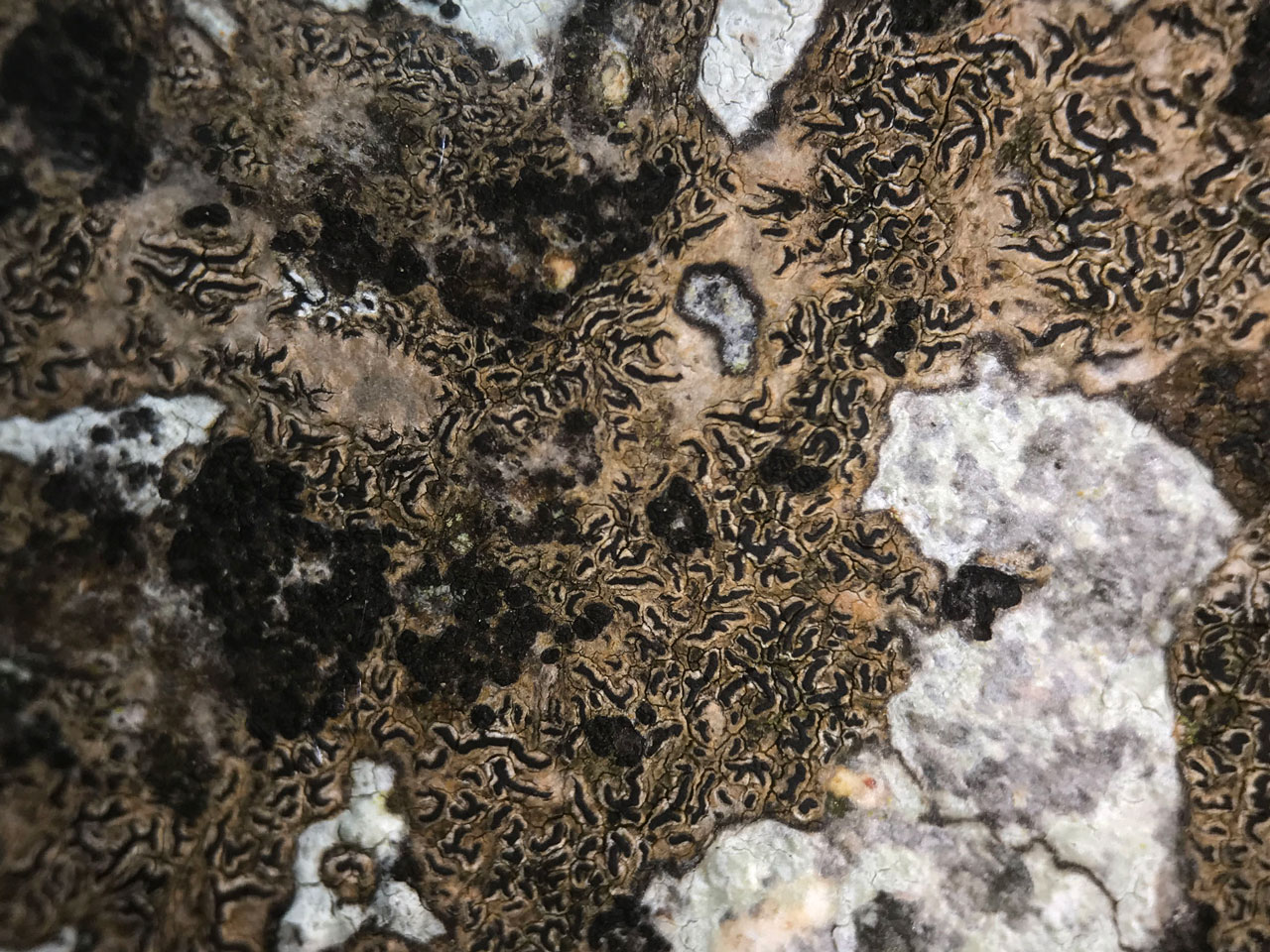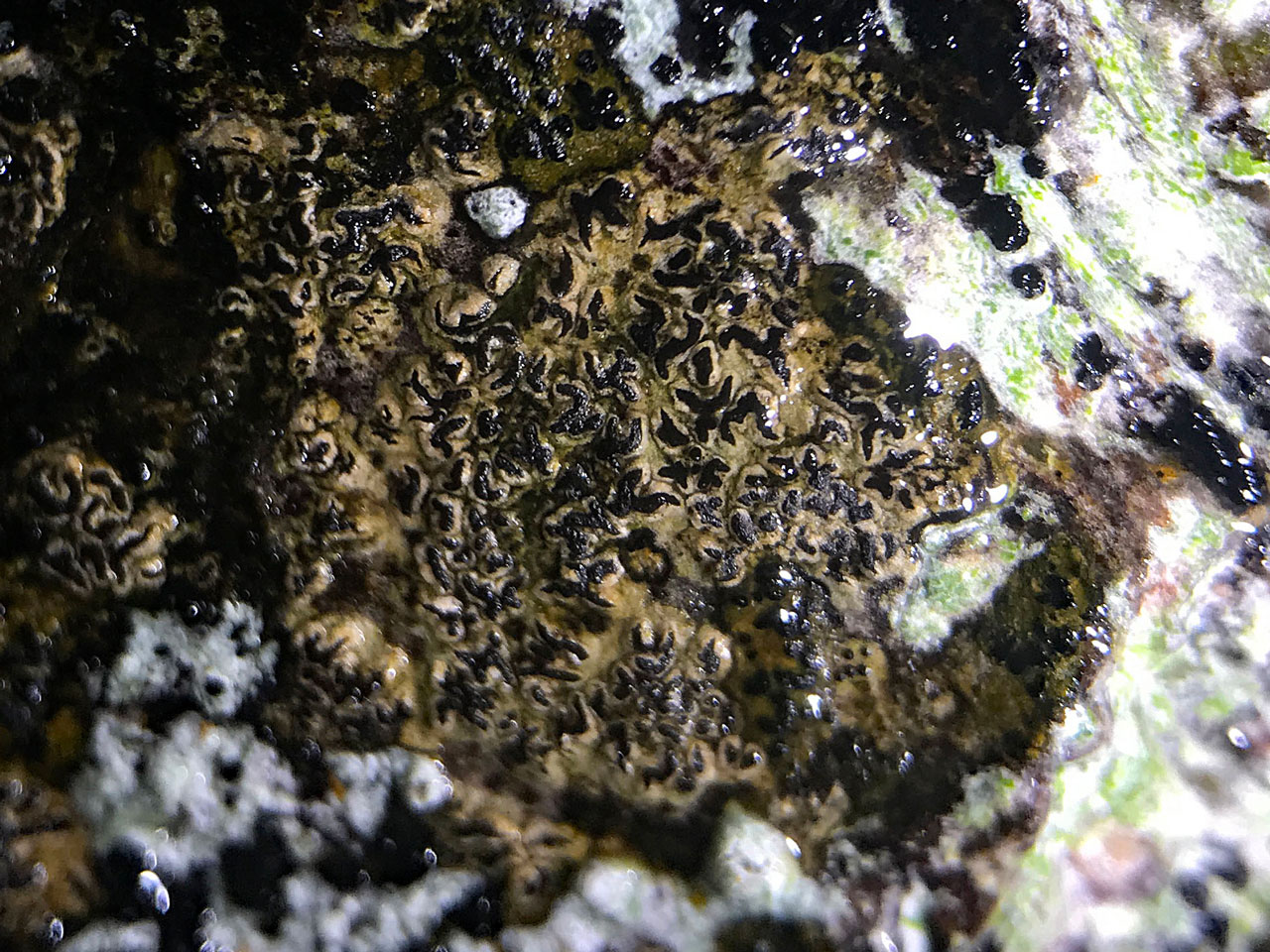Schismatomma ricasolii
A lovely little lichen with very irregular apothecia which are simple and elongate to branched with a distinct whitish thalline margin set on a pale fawn thallus. Found on smooth mesic bark on older but not necessarily veteran trees. Rare with a very scattered distribution in the south but with a more concentrated distribution in north east Scotland on older Aspen trees in river valleys.
Thallus white to pale grey, often cracked, with calcium oxalate crystals; prothallusblack when present; soralia absent. Apothecia very irregular in shape, simple or branched, ± elongate, 0.3–1.5 (–2) × 0.08–0.2 mm, immersed or slightly raised; thalline margin ± white; epithecium reddish brown; hymenium 55–80 µm tall, I+ blue; hypothecium 40–115 µm tall, base root-like, dark red-brown, K+ olivaceous green to black; paraphysoids sparsely branched, pale brown above. Ascospores 24–36 (–40) × (2.5–) 3–3.5 µm, 3-septate, narrowly fusiform to arcuate or sigmoid, coiled together in the ascus. Pycnidia 60–100 µm diam., immersed, black; conidia 4–5 × 1.3–1.5 µm, aseptate, bacilliform, curved or straight. Thallus C–, K–, KC–, Pd–, I–, UV– (no lichen products detected by TLC).
Pseudoschismatomma rufescens is similar but the true exciple is always clearly visible in sections and the ascospores are shorter.
On trunks of deciduous trees (including Hornbeam, Beech, Ash, Oak and Aspen) in parklands or well-lit woodland with less acid bark. Mainly on Aspen in north east Scotland.

Rare but appears to be spreading; S. England (Devon to S. Hampshire), Lake District, previously recorded from Shropshire; W. Wales, Scotland, frequent in N.E. Highlands, rare in S. Scotland; Ireland, rare, no recent records
A rare species with a very thin scattered distribution in the south, usually on older trees with smooth bark, not necessarily veteran trees. Also often found on field trees in farmland and landscape parks not necessarily ancient pasture woodland sites. Recently found in new sites and areas and may be spreading but is still rare. Originally mainly recorded from Ash in the south, which would have been a concern with Ash Dieback, but the newer are on a variety of tree species. In north east Scotland more concentrated distribution on older Aspen trees in river valleys. Here recently arrived Beavers are potential threat unless adequate mitigation measures are taken.
Britain: Vulnerable & International Responsibility species
Scotland: Priority Taxon for Biodiversity in Scotland
Wales: Vulnerable & Section 7 species
England: Section 41 species
Cannon, P., Aptroot, A., Coppins, B., Ertz, D., Sanderson, N., Simkin, J. & Wolseley, P. (2023). Arthoniales: Roccellaceae [revision 1], including the genera Cresponea, Dendrographa, Dirina, Enterographa, Gyrographa, Lecanactis, Ocellomma, Pseudoschismatomma, Psoronactis, Roccella, Schismatomma and Syncesia. Revisions of British and Irish Lichens 32: 1-22.
Text by Neil A Sanderson





